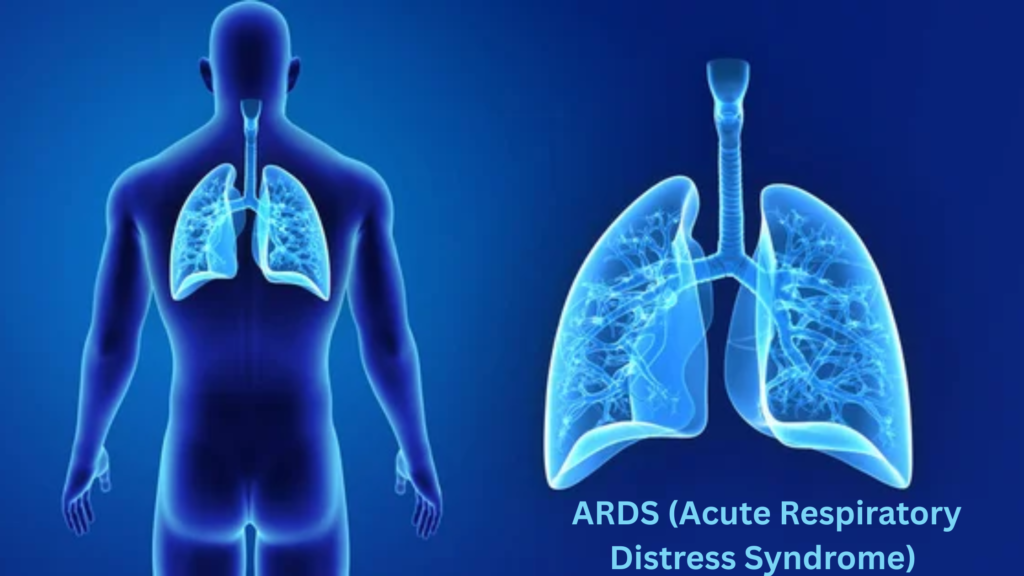🌬️ ARDS (Acute Respiratory Distress Syndrome) – Overview
ARDS is a serious condition characterized by sudden and severe inflammation in the lungs, leading to widespread lung tissue damage and fluid leakage into the alveoli (air sacs). This results in severe breathing difficulty and low oxygen levels in the blood.
⚙️ Causes of ARDS
ARDS can develop after various direct or indirect injuries to the lungs, such as:
- Severe pneumonia
- Sepsis (blood infection)
- Aspiration (inhaling vomit or other substances)
- Trauma (e.g., chest injury)
- Inhalation of harmful substances
- Pancreatitis
- Multiple blood transfusions
- Near drowning
📋 Symptoms
- Rapid onset of severe shortness of breath
- Labored, rapid breathing
- Low oxygen levels despite oxygen therapy
- Cyanosis (bluish color of lips/skin)
- Confusion or fatigue due to low oxygen
- Cough, sometimes with frothy sputum
🩺 Diagnosis
- Chest X-ray or CT scan showing bilateral lung infiltrates (“white-out” appearance)
- Arterial blood gases (ABG) revealing low oxygen levels (hypoxemia)
- Rule out heart failure as the cause of fluid in lungs
- Clinical history of a triggering event (infection, trauma, etc.)
💊 Treatment
- Supportive care is the mainstay:
- Mechanical ventilation with low tidal volumes (to protect lungs)
- Positive end-expiratory pressure (PEEP) to keep alveoli open
- Oxygen therapy to maintain adequate blood oxygen levels
- Treat underlying cause (antibiotics for infection, control sepsis)
- Fluid management to avoid overload
- Sedation and sometimes paralysis for ventilated patients
- In severe cases: extracorporeal membrane oxygenation (ECMO) — a heart-lung bypass machine
⚠️ Complications
- Lung scarring (fibrosis) leading to long-term breathing problems
- Multiple organ failure due to severe illness
- Death in severe or untreated cases
🛡️ Prevention
- Early treatment of infections and sepsis
- Avoid aspiration (e.g., careful feeding in at-risk patients)
- Protective ventilation strategies during surgery or critical illness
